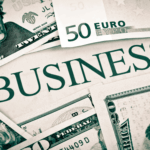In the ever-shifting corporate landscape, renowned companies often undergo leadership changes during challenging times, as they attempt to regain a competitive edge. With their storied histories, Intel and Harley-Davidson are currently navigating significant transitions. While Intel’s leadership shifts focus on revitalizing its semiconductor business under a new strategy, Harley-Davidson seeks to address market demands by continuing its commitment to both traditional and electric motorcycles. These leadership moves underscore strategic pivots aimed at responding to evolving market conditions.
Reflecting on previous endeavors, Intel’s missteps caused by missing key technological advances like smartphone chips and AI processors have hindered its market performance. With substantial investments in its foundry business, Intel under former CEO Pat Gelsinger faced significant obstacles, including approximately a $19 billion loss in 2024. Meanwhile, Harley-Davidson’s focus on electric motorcycles through LiveWire didn’t match the success expected, leading to a stock price decline and a series of internal challenges. Leadership changes now aim to rectify past miscalculations.
How Is Intel Addressing Leadership Transitions?
Lip-Bu Tan, appointed as Intel’s CEO in March 2025, leverages his semiconductor expertise to address operational inefficiencies. Reducing costs, focusing on high-margin projects, and introducing a next-generation manufacturing process are at the forefront of his plans to reclaim market position. He has set sights on securing partnerships with industry leaders such as Nvidia (NASDAQ:NVDA) and Apple (NASDAQ:AAPL) to enhance the company’s competitive stance.
Efforts by Tan also involve restructuring Intel’s workforce and improving direct engagement with the market, aiming to overcome entrenched challenges from competitors. Yet, despite these actions, the recovery path demands patience, considering current market competition and potential setbacks. Unexpected hurdles may arise, and the extent of recovery remains unpredictable, requiring continued strategic assessment.
What Are Harley-Davidson’s Strategies for Revitalization?
At Harley-Davidson, the search for a new CEO signals an impending revitalization strategy aiming to realign with market preferences. Following Jochen Zeitz’s focus on electric motorcycle development, there are calls to reconnect with Harley’s traditional models that resonate with core brand enthusiasts. The implementation of the Hardwire plan, revisiting the brand’s legacy while cautiously experimenting with electric ventures, emphasizes the necessity to adapt for future growth.
Activist involvement from stakeholders like H Partners indicates pressure for strategic change. Their push to reorient Harley-Davidson’s leadership reflects concerns over current strategies’ effectiveness. Maintaining brand allure, especially among younger demographics, remains a priority as the firm grapples with evolving consumer expectations and market dynamics.
Examined thoroughly, the situations at Intel and Harley-Davidson underscore the potential complexities and opportunities stemming from leadership transitions. Stock valuation remains uncertain and hinges on strategic decisions that may influence long-term prospects. Investors must remain vigilant, weighing potential risks and returns associated with leadership-driven turnarounds.









